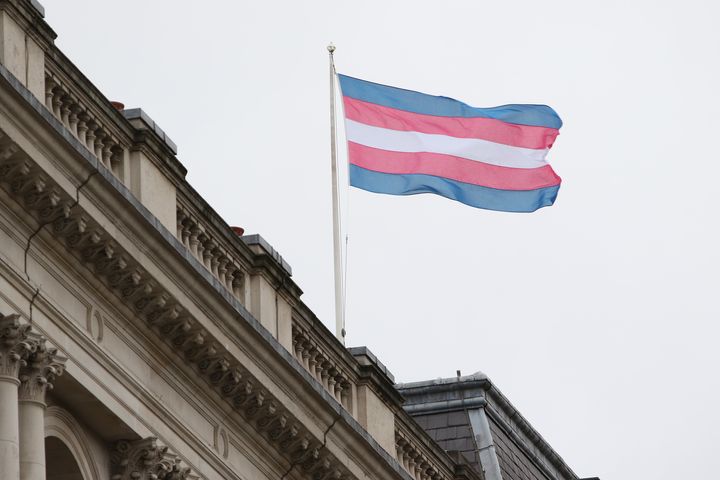‘The Testaments’ Tries to Explain Female Participation in Patriarchy
But reality isn’t as glamorous as fiction.

Warning: This post contains major spoilers for Margaret Atwood’s new book, “The Testaments.”
In her new sequel to “The Handmaid’s Tale,” “The Testaments,” Margaret Atwood attempts to answer two of the biggest questions that haunt those who have followed the tale of Gilead:
- What happened to Offred and her family?
- How can women commit such horrible atrocities against each other?
The looming villain of “The Handmaid’s Tale,” Aunt Lydia, is one of three main characters that the sequel follows. In the first book, her role was that of the cruel and devout enforcer, committing violence and mental and physical torture against other women. In “The Testaments,” the villainess is given a new dimension.
Aunt Lydia, as it turns out, is working with the resistance.
Rather than the true Gilead believer we have come to know, a new version of Aunt Lydia is laid out before us. A family court judge in her pre-Gilead life who helped women and children, Lydia was recruited by Commander Judd, a high-ranking Gilead official, shortly after Gilead was formed.
Lydia, along with female judges, lawyers, doctors, and other professional women, were rounded up into a stadium and forced to watch the execution of their female colleagues. Some of the executions were conducted by women in brown robes — at first, Lydia declared them, “Monsters!”
It wasn’t long after that Lydia became one of the brown-robed women herself. After a short stay in the “Thank Tank,” a form of isolation torture used to mentally break its victims, Lydia decided to join Commander Judd. At that moment, she decided she would make it her goal to enact revenge on Judd, who had ordered her torture.
Fifteen years after the events of “The Handmaid’s Tale,” Aunt Lydia is working with the Mayday resistance to provide information that will bring down Commander Judd — and Gilead with it.
Turns out she was never a True Believer after all.

Aunt Lydia’s redemption is fun, refreshing, and surprising. Readers never expected Lydia, previously portrayed as a cold-hearted villain, to become a sympathetic anti-hero.
Atwood’s answer to the burning question, “How could women do this?” is simple, and optimistic: Aunt Lydia was only doing what she had to in order to take Gilead down from the inside. It was all a ruse, and a successful one.
Yet, this answer does a disservice to those seeking to understand the real female villains around us. Whether it is the anti-abortion campaigners on TV, the teachers at school who measured the length of our skirts, the women at church who blame us when we speak out against abuse, or even our own mothers who teach us to conform for our own good — we are all familiar with women who seem to have sold out their sex. And none of them are secret double-agents conspiring to take the patriarchy down.
In “The Testaments,” Atwood does provide a foil to Lydia — Aunt Vidala, a True Believer who was a part of Gilead from the start. Unlike Lydia, her loyalty to the regime and to God has never faltered. Where Lydia was the villain of “The Handmaid’s Tale,” Vidala is positioned to be the villain of the sequel. While Lydia is provided atonement through the explanation of her actions and her future good deeds, Atwood provides no explanation or atonement for Vidala. It seems now that Lydia has been found to have been secretly acting for the benefit of women all along, we are meant to shift our blind hatred of sex-traitors on to Aunt Vidala. A true explanation of the cruelty of the Aunts towards other women remains unaccounted for.
Feminist writers like Andrea Dworkin and Dee L. R. Graham have sought to provide real answers to the phenomenon of anti-feminist women, and it turns out the reality is a lot less glamorous than sabotage and revenge.
Under patriarchy, women live in a constant state of terror at the hands of men. We are raped, abused, bought and sold, and killed by them. Our fathers, husbands, brothers, pastors, bosses, and eventually even sons are able to control us through physical terror and women, denied the required resources, have little means of fighting back.
In her 1978 book, “Right-wing Women”, Dworkin lays out an explanation for the apparently self-sabotaging behavior of anti-feminist women as a selfish, yet adaptive, tool for survival.
From father’s house to husband’s house to a grave that still might not be her own, a woman acquiesces to male authority in order to gain some protection from male violence. She conforms, in order to be as safe as she can be. Sometimes it is a lethargic conformity, in which case male demands slowly close in on her, as if she were a character buried alive in an Edgar Allan Poe story. Sometimes it is a militant conformity. She will save herself by proving that she is loyal, obedient, useful, even fanatic in the service of the men around her.
- Dworkin, “Right-wing Women”
We can see Dworkin’s analysis of the different forms conformity takes playing out even fifty years later. Some women conform to patriarchy in smaller, slow-burning ways: we cave to pressures to be feminine, we do sexual acts for men we’d really prefer not to, we tell other women they should do the same because it’s easier.
Some women, the contemporary Aunts of pre-Gilead, lean in a little harder: they fight to deny women the right to bodily autonomy, they silence victims of sexual assault, they abuse children who are gender non-conforming — all in hopes of deflecting male violence away from themselves.
Attempting to strike a bargain, the woman says: I come to you on your own terms. Her hope is that his murderous attention will focus on a female who conforms less artfully, less willingly. In effect, she ransoms the remains of a life — what is left over after she has renounced willful individuality — by promising indifference to the fate of other women.
- Dworkin, “Right-wing Women”
In this way, women are forced to fight selfishly to survive, preventing us from joining together as a sex-class to rise up against our oppressor. Of course, no amount of throwing other women under the bus truly offers protection from male violence, but this is psychologically damaging to accept.
This pattern is passed through the generations from mother to daughter.

Mothers are often of the strictest enforcers of patriarchal norms — such as the mothers who force female genital mutilation on their daughters, holding them down while the cut takes place. In our own culture, our mothers may enforce patriarchal norms in other ways: telling us how to dress, act, eat, speak, and look to be acceptable to men. These dramatically different behaviors are all part of the same desire: for women to protect their children and help them survive by conforming to patriarchy.
Mothers raise daughters to conform to the strictures of the conventional female life as defined by men, whatever the ideological values of the men. Mothers are the immediate enforcers of male will, the guards at the cell door, the flunkies who administer the electric shocks to punish rebellion
- Dworkin, “Right-wing Women”
Mothers know that, for them, participation in patriarchy has been vital to their survival. They want the same for their daughters. They know what the alternative is.
This psychological dance is not necessarily happening consciously, although individual acts may appear to be conscious choices. Dee Graham, author of “Loving to Survive,” describes the psychological impact of male terror on women as “Societal Stockholm Syndrome.”
Stockholm Syndrome has been observed to occur in situations where hostages adapt by learning to empathize with their captors. While it may seem like hostages would do the opposite, empathizing with the captor is important since it increases the hostage’s ability to do one thing that is vital for survival: decrease the captor’s antagonism towards the hostage. In extreme cases, the captors themselves may even feel connection and attachment to the hostage if there are sufficient opportunities for bonding. This is useful to the hostages, as it offers them reassurance that they will not be killed.
“Empathizing with the captor is important since it increases the hostage’s ability to do one thing that is vital for survival: decrease the captor’s antagonism towards the hostage.”
Patterns similar to Stockholm Syndrome have also been found in situations of abuse and domestic violence. Victims of domestic violence learn to not only predict the abuser’s behavior but often find themselves empathizing with him. This is not “fake” empathy or acting. The victim truly does empathize with the abuser’s point of view. This is how they learn to understand and navigate him, and how they survive.
According to Graham, this pattern of abuse → empathy → survival has happened to women on a massive scale: Societal Stockholm Syndrome.
Empathizing with patriarchal ideals is not just an act that women put on to deflect male violence or gain access to their inner sanctum for sabotage — it is an adaptive tool that has helped women survive for centuries.
Of course, none of this is enough to protect women or their daughters. Right-wing women experience violence at the hands of men every day. Yet, there is always the looming threat of something worse to keep them in their place and afraid.
Most women cannot afford, either materially or psychologically, to recognize that whatever burnt offerings of obedience they bring to beg protection will not appease the angry little gods around them.
- Dworkin, “Right-wing Women”
While it does help provide some insight, none of this should serve as an excuse or justification for women’s anti-feminist behavior. Though we may be helpless to the forces beyond our control, we do need to take personal accountability for our actions — and throwing other women under the bus should not be justified, even if it is for our own survival.
While Aunt Lydia’s new story may provide us with a temporary, glamorous, and exciting answer to “How could she do that?”, it misses the point. Most women who side with the patriarchy do not do it with full awareness and a duplicitous intent to overthrow. Rather, nearly all women conform to patriarchy to some degree as a means of survival. Some women take it a step further, truly empathizing with our captors in order to find a way to exist without causing further antagonism towards themselves. This empathy is genuine, like Aunt Vidala’s, not faked like Lydia’s was.
Learning to understand these women, the ones who we see hurt and betray their own sex, is necessary for those looking to push on towards women’s liberation. Painting women as either black or white, villains or heroes, prevents us from meeting most women where they currently are. Though “The Testaments” provides a thrilling and engaging conclusion to Aunt Lydia’s tale, it doesn’t do much to deliver on Atwood’s second promise of answering: How can women commit such horrible atrocities to each other?
The reality is much more complicated for the real-life women caught on the “wrong side of history.”
The generous support of our readers allows 4W to pay our all-female staff and over 50 writers across the globe for original articles and reporting you can’t find anywhere else. Like our work? Become a monthly donor!
Enter your email below to sign in or become a 4W member and join the conversation.
(Already did this? Try refreshing the page!)





Comments